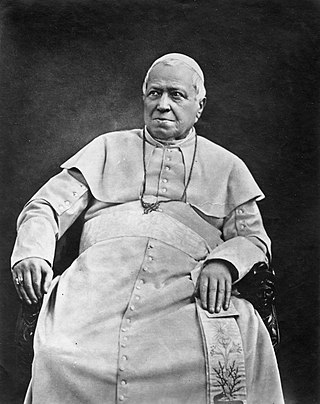
Pope Pius IX was head of the Catholic Church from 1846 to 1878. His reign of 32 years is the second longest of any pope in history, behind that of Saint Peter. He was notable for convoking the First Vatican Council in 1868 and for permanently losing control of the Papal States in 1870 to the Kingdom of Italy. Thereafter, he refused to leave Vatican City, declaring himself a "prisoner in the Vatican".
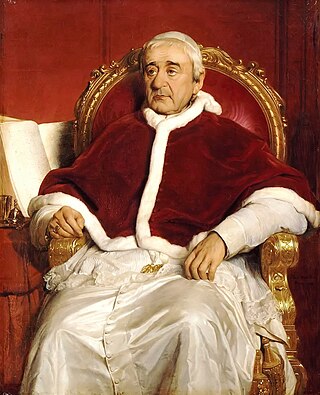
Pope Gregory XVI was head of the Catholic Church and ruler of the Papal States from 2 February 1831 to his death in June 1846. He had adopted the name Mauro upon entering the religious order of the Camaldolese.

Jean-Baptiste Henri-Dominique Lacordaire, OP, often styled Henri-Dominique Lacordaire, was a French ecclesiastic, preacher, journalist, theologian and political activist. He re-established the Dominican Order in post-Revolutionary France. Lacordaire was reputed to be the greatest pulpit orator of the nineteenth century.
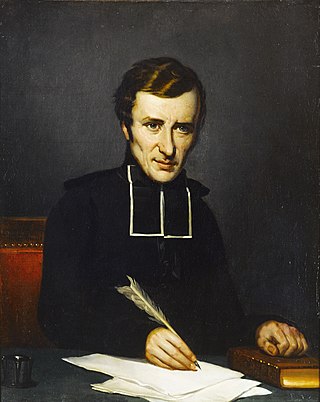
Félicité Robert de La Mennais was a French Catholic priest, philosopher and political theorist. He was one of the most influential intellectuals of Restoration France. Lamennais is considered the forerunner of liberal Catholicism and social Catholicism.
Quanta cura was a papal encyclical issued by Pope Pius IX on 8 December 1864. In it, he decried what he considered significant errors afflicting the modern age. These he listed in an attachment called the Syllabus of Errors, which condemned secularism and religious indifferentism.
Modernism in the Catholic Church describes attempts to reconcile Catholicism with modern culture, specifically an understanding of the Bible and Catholic tradition in light of the historical-critical method and new philosophical and political developments of the late 19th and early 20th centuries.
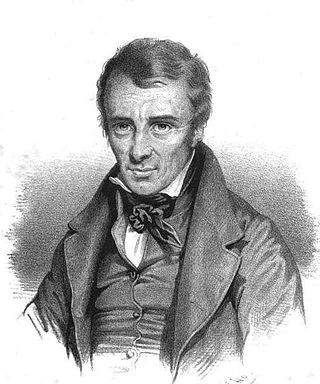
Liberal Catholicism was a current of thought within the Roman Catholic Church influenced by classical liberalism and promoting the separation of church and state, freedom of religion in the civic arena, expanded suffrage, and broad-based education. It was influential in the 19th century and the first half of the 20th, especially in France. It is largely identified with French political theorists such as Felicité Robert de Lamennais, Henri Lacordaire, and Charles Forbes René de Montalembert influenced, in part, by a similar contemporaneous movement in Belgium.

Humanum genus is a papal encyclical promulgated on 20 April 1884 by Pope Leo XIII.

According to Roman Catholicism, the history of the papacy, the office held by the pope as head of the Catholic Church, spans from the time of Peter to the present day.
Singulari Nos was an encyclical issued on June 25, 1834, by Pope Gregory XVI. Essentially a follow-up to the better-known Mirari vos of 1832, Singulari Nos focused strongly on the views of French priest Felicité Robert de Lamennais, who did not see any contradiction between Catholicism and then-modern ideals of liberalism and the separation of church and State.

Ineffabilis Deus is an apostolic constitution by Pope Pius IX. It defines the dogma of the Immaculate Conception of the Blessed Virgin Mary. The document was promulgated on December 8, 1854, the date of the annual Solemnity of the Immaculate Conception, and followed from a positive response to the encyclical Ubi primum.
There are many papal pronouncements against Freemasonry; the most prominent include:
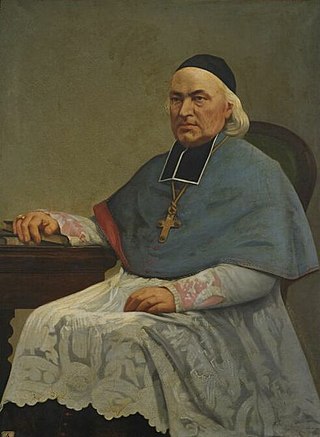
Olympe-Philippe Gerbet was a French Catholic bishop and writer.
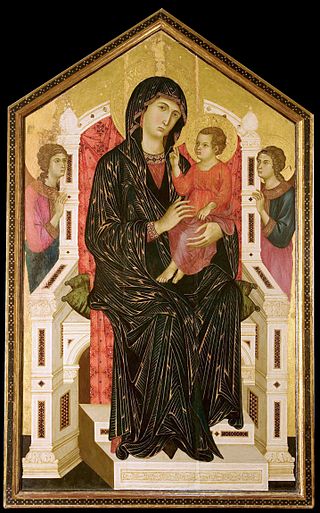
Mariological papal documents have been a major force that has shaped Roman Catholic Mariology over the centuries. Mariology is developed by theologians on the basis not only of Scripture and Tradition but also of the sensus fidei of the faithful as a whole, "from the bishops to the last of the faithful", and papal documents have recorded those developments, defining Marian dogmas, spreading doctrines and encouraging devotions within the Catholic Church.

Ubi primum is an encyclical of Pope Pius IX to the bishops of the Catholic Church asking them for opinion on the definition of a dogma on the Immaculate Conception of the Virgin Mary. It was issued on February 2, 1849.
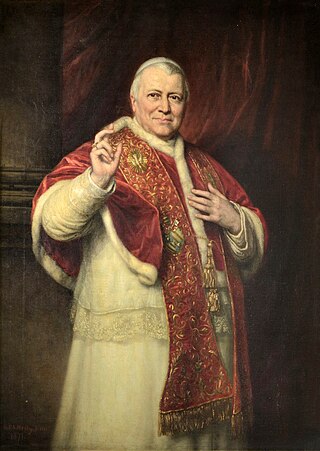
The theology of Pope Pius IX championed the pontiff's role as the highest teaching authority in the Church.
The modern history of the papacy is shaped by the two largest dispossessions of papal property in its history, stemming from the French Revolution and its spread to Europe, including Italy.

Liberalism is a Sin is a controversial book written by Roman Catholic priest Félix Sardà y Salvany in 1884, which became a rallying point for conservative political movements such as Integrism and Carlism.

Rothschild loans to the Holy See refers to a series of major financial loans arranged between the Rothschild family and the Holy See of the Catholic Church. The first loan which occurred in 1832 took place in the aftermath of the Napoleonic Wars during the Pontificate of Pope Gregory XVI. This loan agreed on was for a sum of £400,000. A second loan occurred during the Pontificate of Pope Pius IX in the early 1850s with the same members of the Rothschild family after the collapse of Giuseppe Mazzini's short-lived revolutionary Roman Republic and the restoration of the Papal States.












